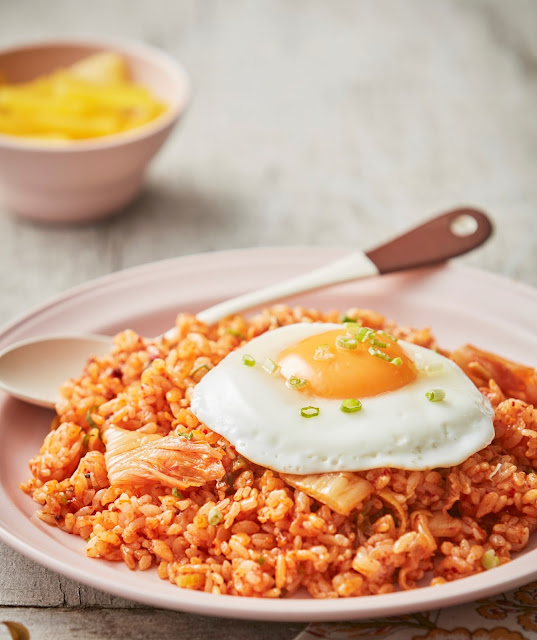Kimchi originally was a way to preserve vegetables during the winter months, this was back in the olden days lah. What began as pickles in a salty brine turned into the kimchi we know today, of course with the addition of various spices and condiments ie. paprika powder. Kira macam telah diberi nafas baharu gitew.
Chonggak Kimchi a.k.a Young Radish is actually interesting as it is named base on how in the olden days Korean bachelors braid their hair. FYI, chonggak = “bachelor” in Korean language.
After a bit of help from Mr Google, I was made to understand that there are more than 50 kimchi varieties based on the raw materials being used, its processes, as well as spice and preparation methods. Not only that, it is also identified according to region, right down to its temperature and other environmental conditions, and this has led to the creation of more than 100 different varieties of kimchi.
I’ve learnt that Korean cabbage and radishes are among the most popular vegetables for kimchi, but I was surprised to found out that there are other types of kimchi aside from this 2 vegetables ie cucumbers, chive, carrots, onions and eggplants. You might be as surprise as I am to know that kimchi can also be in soup form – spicy red soup or spicy clear soup. There is also kimchi pancake and kimchi fried rice too, kimchi meehoon ada tak rasanya?
In general, kimchi making process involves seasoning the vegetables and fermenting them until they soften and absorb the flavours. Its recipe gives kimchi fishy gochugaru (flaked peppers) flavor, ginger, garlic paste and fish sauce, and of course the spice. It is said that there are also Kimchi-jjigae or meat and seafood kimchi such as chicken kimchi, oyster kimchi, codfish kimchi, squid kimchi and etc but this is to added to improve and varies its flavor.
In general, kimchi making process involves seasoning the vegetables and fermenting them until they soften and absorb the flavours. Its recipe gives kimchi fishy gochugaru (flaked peppers) flavor, ginger, garlic paste and fish sauce, and of course the spice. It is said that there are also Kimchi-jjigae or meat and seafood kimchi such as chicken kimchi, oyster kimchi, codfish kimchi, squid kimchi and etc but this is to added to improve and varies its flavor.
Other common kimchi :
Napa Cabbage Kimchi is served in winter and early spring.
Perilla leaf kimchi (from Daun Pudina family) or Kkaennip kimchi, this fragrant kimchi commonly eaten during summer time as well.
Apparently Buchu kimchi or garlic chives kimchi is one of the easiest to make. Jom make.



































